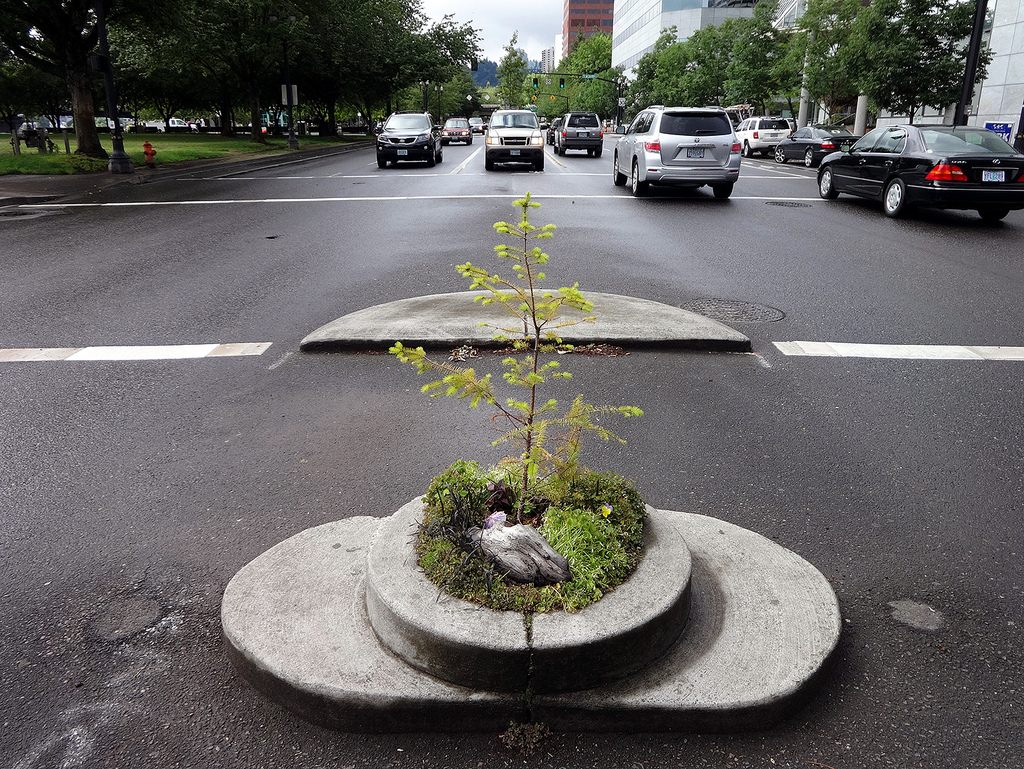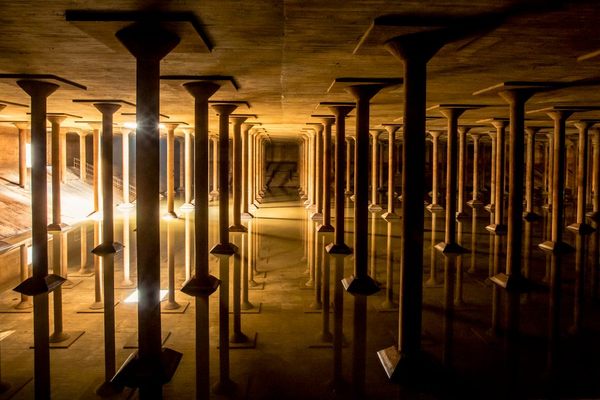The World’s Tiniest City Park Just Got a Little More Official
Mill Ends Park in Portland, Oregon, now has its own sign.

When you think “green space in Portland, Oregon,” you probably don’t picture Mill Ends Park. At about two feet in diameter, and located on a median in the middle of busy Naito Parkway, it’s tough to picnic in. A circuit around it wouldn’t give your dog much exercise. It’s really only big enough for about one very small tree.
But, puny though it may be, Mill Ends Park—the world’s “smallest park,” according to Guinness World Records—is a legitimate city park, listed on the Portland Parks & Recreation department’s official roster. And as of this week, you have fewer excuses to count it out: The department just built it a very authoritative sign.

According to Matt Ross of Portland Parks & Recreation, Portland is home to over 200 parks and natural areas. “The city was planned for having parks,” he says, but Mill Ends was more of an accident. In 1946, Dick Fagan, a writer with the Oregon Journal, surveyed the view from his second-story office window and noticed, on the median of the street below, a hole about two feet wide where a light post was supposed to be. The light pole never came. According to the Parks & Recreation website, when weeds started popping up instead, “Fagan decided to take matters into his own hands and to plant flowers.”
Fagan had a newpaper column named “Mill Ends,” a term for leftover wood scraps. He started covering the goings-on at the tiny verge, calling it Mill Ends Park. In his writing, he claimed leprechauns lived there. In real life, he hosted snail races, planted and tended a single tree, and “made it well known,” as one local fan put it.
After Fagan died in 1969, others kept the park’s spirit alive. On St. Patrick’s Day, 1976, it was added to the official roster of city parks. “It’s managed by the Parks bureau,” says Ross. “It has a regular maintenance schedule, with weeding and watering. Horticulturists attend to it.” (To mark this particular occasion, they planted some bright pink miniature roses.)

It still gets plenty of what Ross calls “community-assisted enhancements:” People have set up tiny swimming pools and sheep farms, and, in 2011, there was a bite-sized Occupy Wall Street protest. This past 4/20, someone planted some cannabis plants, which the city quickly yanked.
This year, the Portland Parks & Recreation carpentry shop decided to get in on the action. The official sign—which is a scaled-down version of the ones found at more traditionally-sized parks—has been installed on the very edge of the median, right next to the park. It is made out of scrap wood and metal, and was built in spare moments, says Ross, who adds that everyone outside the carpentry shop was surprised to see it. All of this befits the park’s own special origins, as surplus space made good.



















Follow us on Twitter to get the latest on the world's hidden wonders.
Like us on Facebook to get the latest on the world's hidden wonders.
Follow us on Twitter Like us on Facebook